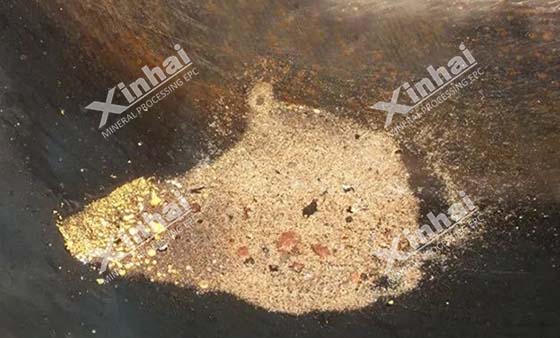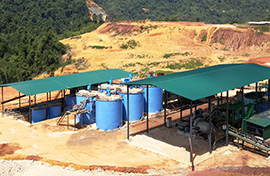-
 E-mail
xhcnlite@ytxinhai.com
E-mail
xhcnlite@ytxinhai.com
-
 Call Us
008615503206672
Call Us
008615503206672
 E-mail
xhcnlite@ytxinhai.com
E-mail
xhcnlite@ytxinhai.com
 Call Us
008615503206672
Call Us
008615503206672
2025-07-30 Views: 1591
Warm Tip: If you want to know more information, like quotation, products, solutions, etc., please Click here ,and contact us online.

As gold prices continue to rise, people are paying more attention to gold beneficiation. However, the types of gold ores are so many and they are complex. This article will explain the common types of gold ores, processing methods and their value.
If you have any needs for Gold Leaching Reagent CNLITE(sodium cyanide substitutes), please contact us directly!
Gold ore is rock that holds gold. The way gold is mixed with other materials changes how easy it is to extract.
What it is: Gold shows up as small pieces or chunks inside quartz rock.
How to process: Crush the rock and use gravity or simple cyanide methods.
Why it's valuable: Usually high in gold and easy to work with.
What it is: Loose gold found in river sands and gravel.
How to process: Use pans, sluices, or shaking tables.
Why it's valuable: Cheap and simple to recover; perfect for small operations.
What it is: Gold is trapped inside minerals like pyrite.
How to process: Needs flotation, roasting, or pressure treatment before leaching.
Why it's valuable: Can be rich in gold, but harder and costlier to process.
What it is: Gold is so fine you can’t see it, often in soft sediment rocks.
How to process: Chemical methods like pressure oxidation.
Why it’s valuable: These deposits are large and worth the investment if you have the right tools.
What it is: Gold found with copper and iron minerals.
How to process: Use flotation and cyanide leaching.
Why it's valuable: Profits come from both the gold and the copper.
What it is: Weathered surface ore with gold in rusty-colored zones.
How to process: Best suited for gravity or heap leaching.
Why it's valuable: Not always high grade, but cheap to extract.
What it is: Gold found with silver, copper, or zinc.
How to process: Float the other metals, then extract gold.
Why it's valuable: You can make money from multiple metals.
Gold Recovery: Some types can give you over 90% recovery, others need more work.
Processing Cost: Placer and quartz ores are cheaper to process. Sulfide and Carlin types need more effort and tools.
Environmental Risk: Some ores, especially sulfide-rich ones, can be harmful if not handled correctly.
Try small tests like panning or acid testing in the field.
Send samples to a reliable lab for full testing.
Tools like fire assay, XRF, or a microscope can give clearer answers.
| Ore Type | Best Method | Tools You’ll Need |
|---|---|---|
| Quartz Gold | Gravity, Cyanide | Crusher, Mill, Leaching Tanks |
| Placer Gold | Gravity | Pan, Sluice, Shaking Table |
| Sulfide Gold | Flotation + Roasting | Flotation Unit, Roaster, Leach Tanks |
| Carlin-Type | Pressure Oxidation | Autoclave, Chemical Leach System |
| IOCG | Flotation + Cyanide | Crusher, Flotation, Leaching System |
| Oxidized Ore | Heap Leach, Gravity | Heap Pads, Basins, Separators |
| Polymetallic Ore | Flotation + Cyanide | Flotation Line + Leaching Equipment |
If you know what kind of gold ore you have, you can choose the best way to process it. Easy ores like quartz and placer types need less money and give quick returns. Others like sulfide and Carlin ores need more setup but may offer more gold. African miners who understand their ore stand a better chance at making real profit.
Need Help Testing Your Gold Ore? We offer free help for testing, picking equipment, and getting better recovery. If you're a mine owner in Africa or anywhere, we' re ready to support your next step!
No. 188, Xinhai Street, high-tech Industrial Park, Fushan District, Yantai, Shandong, China.

Please leave your message here! We will send detail technical info and quotation to you!